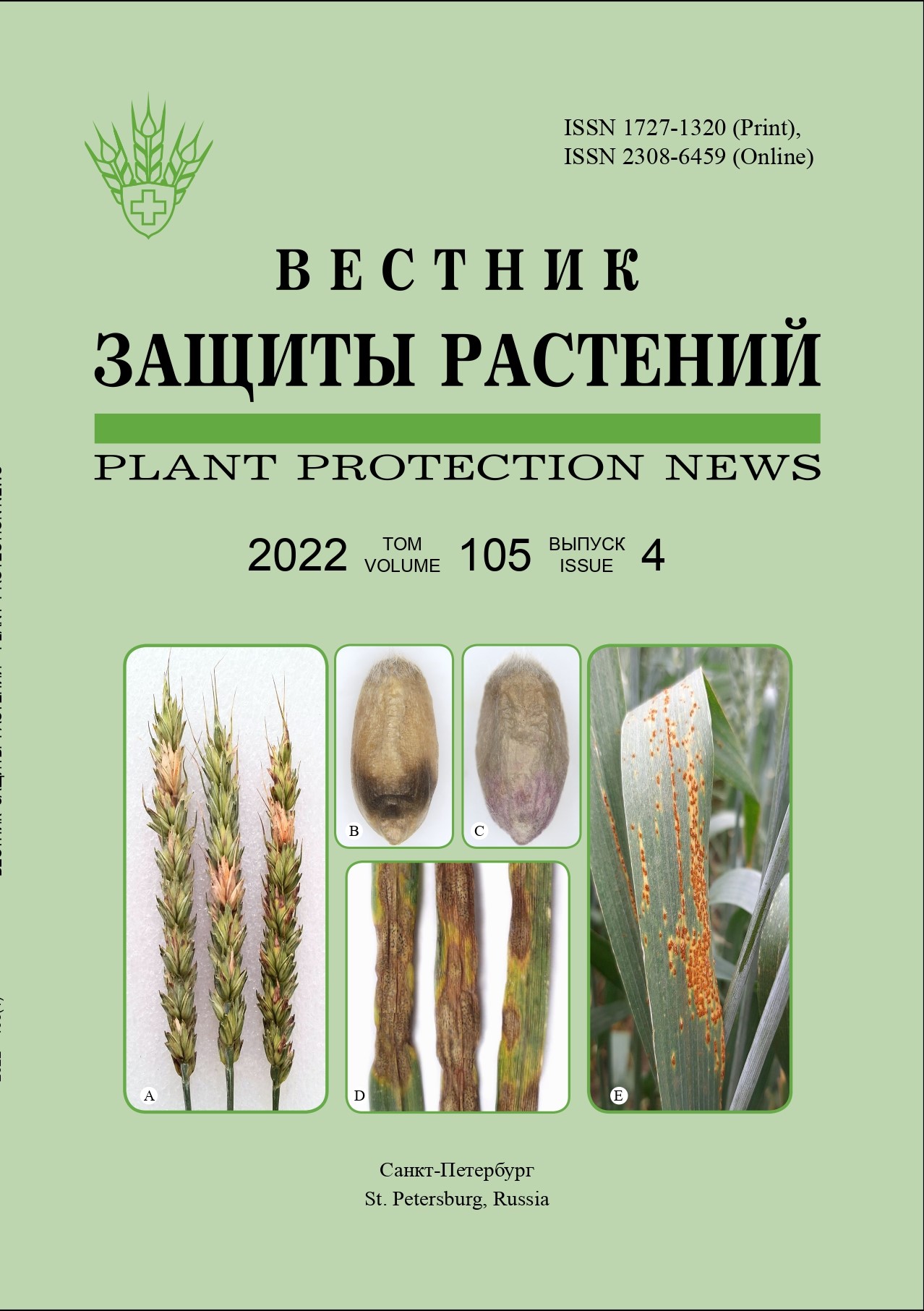Micromycetes associated with wheat and their significance as pathogens in Russia
Keywords:
Triticum, harmfulness, distribution, taxonomy, fungiAbstract
The review lists the main wheat diseases and pathogenic fungi that cause them, as well as those fungi that may emerge as a potential threat to wheat crops. The modern taxonomic status of fungal species associated with various organs of wheat is given, their geographical distribution and the degree of influence on the wheat harvest are briefly characterized. Micromycetes were divided into three groups according to their phytosanitary significance. The first group is represented by fungi, which obviously have great importance as pathogens of 25 main wheat diseases. The second group included three diseases, the causative agents of which have not been found in Russia, but are significant for wheat production in other countries and potentially threaten for Russian grain farming. The third group consisted of fungi causing 29 minor and poorly studied diseases with unverified harmfulness. The question of whether these fungi can cause losses is still controversial, and the available data should be reviewed and confirmed. This set of information will help in the future, using molecular methods, to conduct more targeted studies to determine the area of fungi that cause wheat diseases, fix changes in the boundaries of their distribution and clarify the harmfulness of poorly studied species.



